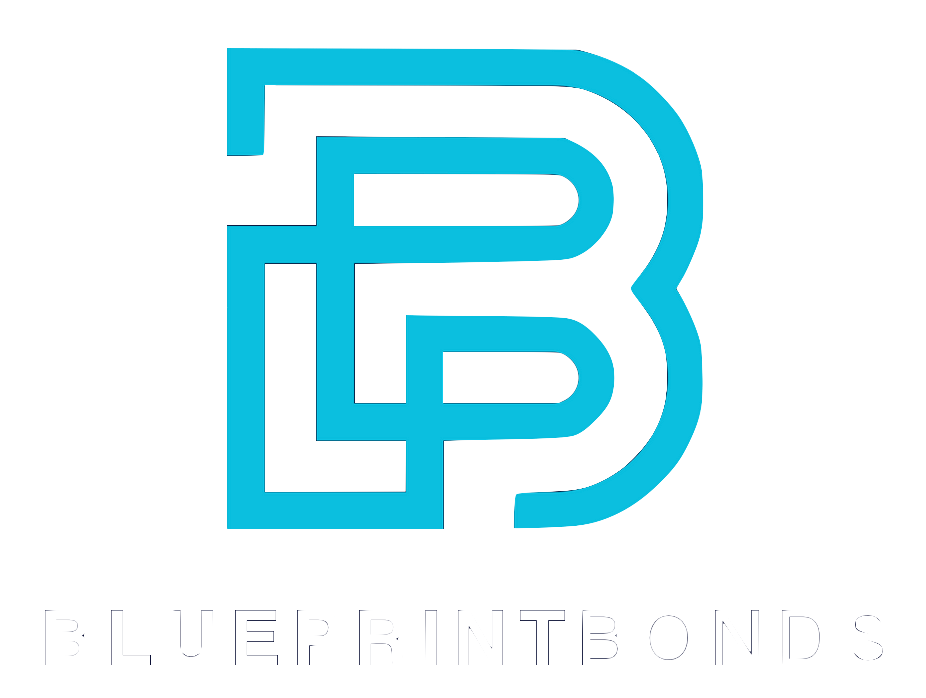In the realm of real estate and construction, understanding the intricacies of liens and bonds is paramount. One such important instrument in Florida is the Release of Lien Bond. This article aims to provide a comprehensive overview of what a Release of Lien Bond is, its significance, and the steps involved in obtaining one.
What is a Release of Lien Bond?
A Release of Lien Bond is a legal document that allows property owners to clear a lien from their property. When a contractor or supplier has not been paid for their services or materials, they can file a lien against the property. This can complicate the sale or refinancing of the property. A Release of Lien Bond effectively removes this lien, allowing the property owner to proceed with their plans.
The Purpose of a Release of Lien Bond
The primary purpose of a Release of Lien Bond is to provide a remedy for property owners facing liens. It serves as a financial guarantee that the lien will be resolved. By posting this bond, the property owner can ensure that any claims made by the lienholder will be satisfied, thus protecting their investment. This is particularly crucial in real estate transactions, where a clear title is essential for buyers and lenders. Without a Release of Lien Bond, property owners may find themselves unable to sell or refinance their property, leading to potential financial losses and legal complications.
How It Works
When a property owner obtains a Release of Lien Bond, they typically work with a surety company. The surety company issues the bond, which acts as a promise to pay the lienholder if the property owner fails to resolve the debt. This bond is then filed with the appropriate court, effectively lifting the lien from the property. It’s important to note that the property owner is still responsible for paying the underlying debt, but the bond provides a temporary solution. The process often involves an assessment of the property owner’s creditworthiness and the nature of the lien, as the surety company needs to evaluate the risk involved in issuing the bond. Additionally, the bond amount is usually set at a value that covers the lien plus any potential legal fees, ensuring that the lienholder is adequately protected.
Once the bond is in place, the property owner can move forward with their plans, whether that’s selling the property or securing financing for renovations. However, it’s crucial for property owners to understand that while the bond releases the lien temporarily, they must still address the underlying debt to avoid further complications. Failure to do so could lead to the lien being reinstated or additional legal action from the lienholder. Therefore, it is advisable for property owners to communicate with the lienholder and work towards a resolution, ensuring that all parties are satisfied and that the property remains free of encumbrances.

When is a Release of Lien Bond Necessary?
Understanding when a Release of Lien Bond is necessary can save property owners significant time and money. Several scenarios may warrant the need for this bond, particularly in the construction and real estate sectors.
Construction Projects
In construction, it’s common for contractors and subcontractors to file liens when they are not paid for their work. If a property owner is looking to sell or refinance their property, having an active lien can be a major hurdle. A Release of Lien Bond can help clear this obstacle, allowing for smoother transactions. This bond essentially serves as a guarantee to the lien claimant that they will be compensated, thus enabling the property owner to proceed with their plans without the cloud of a lien hanging over their head. Additionally, obtaining a Release of Lien Bond can enhance a property’s marketability, as potential buyers or lenders are often wary of properties encumbered by liens.
Disputes with Contractors
Disputes can arise between property owners and contractors regarding payment for work completed. If a contractor files a lien due to non-payment, the property owner may opt for a Release of Lien Bond to expedite the resolution process. This can be particularly beneficial if the property owner believes they have a strong case against the contractor. By securing this bond, property owners can effectively remove the lien while simultaneously allowing for the legal process to unfold without the pressure of immediate payment. Furthermore, this approach can foster a more amicable relationship between the parties involved, as it demonstrates a willingness to resolve the issue while protecting the property owner’s interests. In some cases, the bond may even encourage contractors to negotiate a settlement, as it provides a clear path to resolving the financial dispute without the need for protracted litigation.
The Process of Obtaining a Release of Lien Bond
Obtaining a Release of Lien Bond involves several steps, each crucial to ensuring that the bond is valid and effective. Understanding this process can help property owners navigate the complexities involved.
Step 1: Assess the Situation
The first step in obtaining a Release of Lien Bond is to assess the situation. Property owners should determine the amount owed to the lienholder and the reasons for the lien. This assessment will guide the subsequent steps and help in discussions with the surety company. Additionally, it may be beneficial to gather any relevant documentation, such as contracts, invoices, and communications with the lienholder. This information not only provides clarity but also strengthens the property owner's position when negotiating the terms of the bond.
Step 2: Contact a Surety Company
Once the situation is assessed, the property owner should contact a surety company. It’s important to choose a reputable company that specializes in construction bonds. The surety company will evaluate the property owner’s creditworthiness and the specifics of the lien before issuing the bond. During this stage, property owners may want to compare several surety companies to find the best rates and terms. Engaging in discussions about the bond's coverage limits and any potential fees upfront can also prevent misunderstandings later in the process.
Step 3: Complete the Application
After selecting a surety company, the property owner will need to complete an application for the Release of Lien Bond. This application typically requires detailed information about the property, the lien, and the parties involved. Providing accurate and thorough information is essential to avoid delays. Moreover, property owners should be prepared to submit financial statements and other supporting documents that demonstrate their ability to fulfill the bond's obligations. This transparency not only expedites the approval process but also builds trust with the surety company, which is crucial for a smooth transaction.
Cost of a Release of Lien Bond
The cost of obtaining a Release of Lien Bond can vary significantly based on several factors. Understanding these costs can help property owners budget accordingly.
Factors Influencing Cost
Several factors influence the cost of a Release of Lien Bond, including the amount of the lien, the creditworthiness of the property owner, and the surety company’s underwriting criteria. Generally, the premium for the bond is a percentage of the total lien amount, typically ranging from 1% to 15%.
Additional Fees
In addition to the bond premium, property owners should be aware of any additional fees that may apply. These can include application fees, document preparation fees, and potential legal costs associated with resolving the lien. It’s advisable to clarify all costs with the surety company upfront to avoid surprises.
Understanding the Lien Process
Before diving into the costs, it's essential to understand the lien process itself. A lien is a legal claim against a property, often arising from unpaid debts related to construction work or services rendered. When a lien is placed on a property, it can hinder the owner's ability to sell or refinance the property until the lien is resolved. Obtaining a Release of Lien Bond can be a strategic move to clear the title, allowing property owners to regain control over their assets and proceed with their financial plans.
Impact of Creditworthiness
The creditworthiness of the property owner plays a crucial role in determining the cost of the bond. Surety companies assess the financial stability and credit history of the applicant to gauge the risk involved in issuing the bond. A property owner with a strong credit profile may qualify for lower premium rates, while those with poor credit may face higher costs. Additionally, some surety companies may require collateral or additional guarantees from higher-risk applicants, further influencing the overall expense of securing a Release of Lien Bond.

Legal Considerations
Understanding the legal implications of a Release of Lien Bond is crucial for property owners. This section explores the legal framework surrounding these bonds and the responsibilities of the parties involved.
State Regulations
In Florida, the laws governing liens and bonds are outlined in the Florida Statutes. It’s essential for property owners to familiarize themselves with these regulations to ensure compliance. The statutes provide guidelines on how liens can be filed, the rights of lienholders, and the process for obtaining a Release of Lien Bond. Additionally, property owners should be aware that different types of liens, such as mechanic's liens or tax liens, may have varying requirements and implications. Understanding these nuances can help property owners navigate the complexities of lien laws more effectively, ensuring that they are well-prepared to address any potential legal challenges.
Responsibilities of the Property Owner
While a Release of Lien Bond can temporarily lift a lien, the property owner remains responsible for the underlying debt. Failure to pay the lienholder can result in the surety company pursuing payment from the property owner. Therefore, it’s crucial to resolve any disputes and ensure that all debts are settled in a timely manner. Furthermore, property owners should keep detailed records of all transactions and communications related to the lien and the bond. This documentation can be invaluable in the event of a dispute, providing evidence of compliance and efforts made to settle the debt. Engaging with legal counsel can also be beneficial, as they can offer guidance on navigating the complexities of lien laws and help protect the property owner's interests throughout the process.
Benefits of a Release of Lien Bond
There are several benefits associated with obtaining a Release of Lien Bond. Understanding these advantages can help property owners make informed decisions.
Immediate Relief
One of the most significant benefits of a Release of Lien Bond is the immediate relief it provides. By lifting the lien, property owners can proceed with selling or refinancing their property without the encumbrance of a lien. This can be particularly beneficial in time-sensitive situations, such as when a property owner is facing financial difficulties or needs to relocate quickly for a job. The ability to act swiftly can mean the difference between securing a favorable sale price and having to settle for a lower offer due to the complications posed by a lien.
Preservation of Property Value
Liens can negatively impact the value of a property. By obtaining a Release of Lien Bond, property owners can preserve the value of their investment. This is especially important in a competitive real estate market, where potential buyers may be deterred by the presence of a lien. Moreover, having a clear title can enhance the overall marketability of the property, making it more appealing to a broader range of buyers. In addition to attracting more interest, property owners may also find that they can negotiate better terms and prices when the property is free from liens, ultimately maximizing their return on investment.
Legal Protection
Another key advantage of a Release of Lien Bond is the legal protection it offers property owners. When a lien is lifted, it not only clears the way for financial transactions but also shields the owner from potential legal disputes that could arise from the lien itself. This legal clarity can be crucial in preventing future complications, such as claims from contractors or suppliers who may feel entitled to payment. By securing a Release of Lien Bond, property owners can rest easier knowing that they have taken proactive steps to protect their rights and interests in the property.
Enhanced Negotiation Power
Having a Release of Lien Bond can significantly enhance a property owner's negotiation power. When engaging with potential buyers or lenders, the absence of a lien can serve as a strong bargaining chip. Buyers are often more willing to negotiate favorable terms when they know they are dealing with a property that has a clear title, free from any encumbrances. This can lead to smoother transactions and potentially higher offers, as buyers feel more confident in their investment. Additionally, lenders may be more inclined to approve financing for a property that is not burdened by a lien, further expanding the options available to the property owner.
Common Misconceptions
There are several misconceptions surrounding Release of Lien Bonds that can lead to confusion for property owners. Addressing these misconceptions can provide clarity.
Myth: The Bond Eliminates the Debt
One common misconception is that obtaining a Release of Lien Bond eliminates the underlying debt. In reality, the bond only serves as a temporary solution to lift the lien. Property owners are still obligated to pay the lienholder to avoid further legal complications. Failing to settle the debt can lead to additional legal actions, including the possibility of the lien being reinstated. It’s crucial for property owners to understand that while the bond may provide immediate relief, it does not absolve them of their financial responsibilities.
Myth: All Liens Can Be Cleared with a Bond
Another misconception is that all liens can be cleared with a Release of Lien Bond. While this bond is effective for many types of liens, certain liens, such as those related to taxes or government assessments, may require different procedures for resolution. For instance, tax liens often have specific protocols that must be followed, including negotiations with tax authorities or payment plans. Additionally, some liens may involve court proceedings that cannot be bypassed simply by obtaining a bond. Understanding the nature of the lien and the appropriate steps for resolution is essential for property owners seeking to clear their titles.
Myth: The Process is Quick and Simple
Another prevalent myth is that the process of obtaining a Release of Lien Bond is quick and straightforward. In reality, the timeline can vary significantly based on the complexity of the lien and the responsiveness of the involved parties. Property owners may need to gather extensive documentation, including proof of payment or contracts, to support their case. Moreover, the bond itself must be underwritten, which can take time as the surety company assesses the risk involved. This process can be further complicated if there are disputes regarding the validity of the lien, necessitating additional legal consultations and potentially lengthening the resolution period.
Conclusion
In conclusion, a Florida Release of Lien Bond is a valuable tool for property owners facing liens on their property. By understanding the purpose, process, and implications of this bond, property owners can navigate the complexities of liens more effectively. Whether dealing with construction disputes or preparing for a property sale, obtaining a Release of Lien Bond can provide the necessary relief and protection. As with any legal matter, consulting with a qualified professional is advisable to ensure compliance with state regulations and to make informed decisions.
Article By: Ryan Spalding
Licensed Insurance Agent & Bond Specialist
Contact Us

